The Amazon rainforest of Ecuador is a relatively small patch of the vast jungle that stretches across no less than nine countries of South America. Ecuador is, however, one of the more accessible jump-off points for an unforgettable journey into one of the most biologically diverse regions on the planet. In this post, we set out on a 4-day/3-night Ecuador Amazon rainforest trip to the beautiful and remote Sacha Lodge.
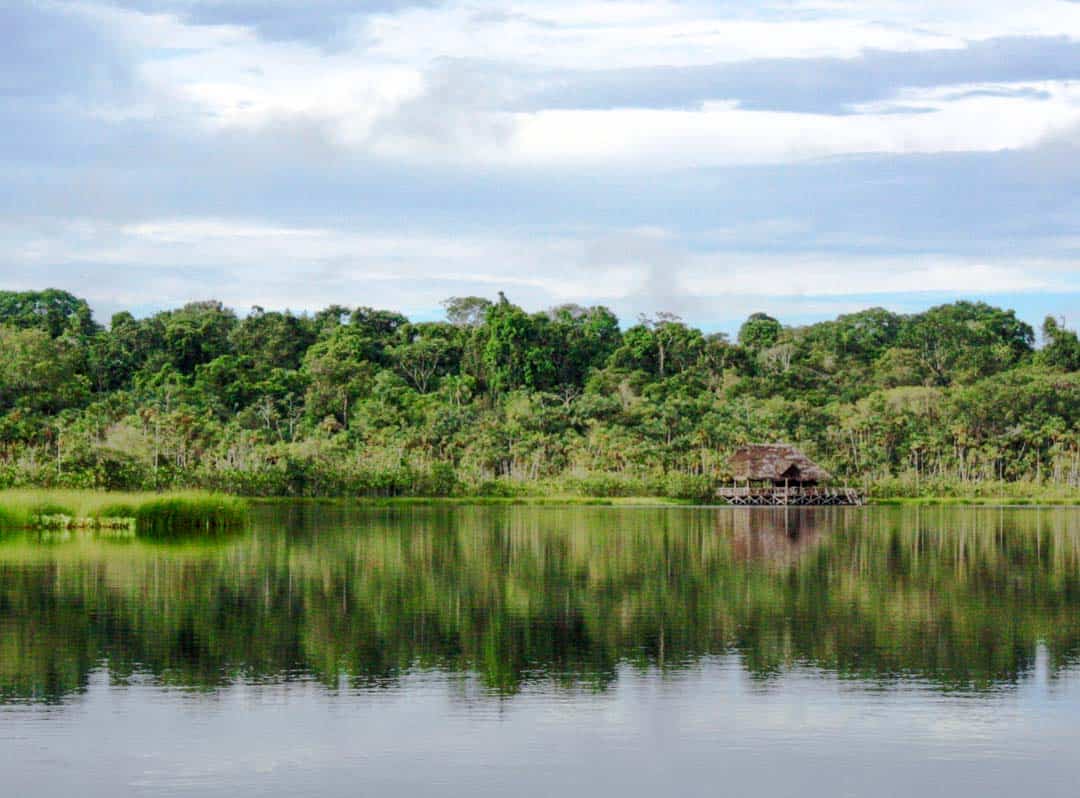
If a tree falls in a forest and no one is around to hear it, does it make a sound? We can’t say. What we can vouch for though is that if someone is around, it does make a sound – a bloody loud one.
Our Journey Into The Amazon Jungle Of Ecuador
Our journey to Ecuador’s Amazon rainforest – a relatively short distance from Quito as the crow flies – was an adventure in itself. A jungle version of planes, trains and automobiles: in this case, planes, boats, boardwalks and canoes.
It began with the ubiquitous Quito traffic jam, followed by a stunning 25-minute flight out of Quito, over the Andes to the small town of Coca in Orellana province, at the convergence of the Coca and Napo rivers. This region of Ecuador, from the eastern slopes of the Andes to the country’s Amazon rainforest basin, is known as the Oriente.
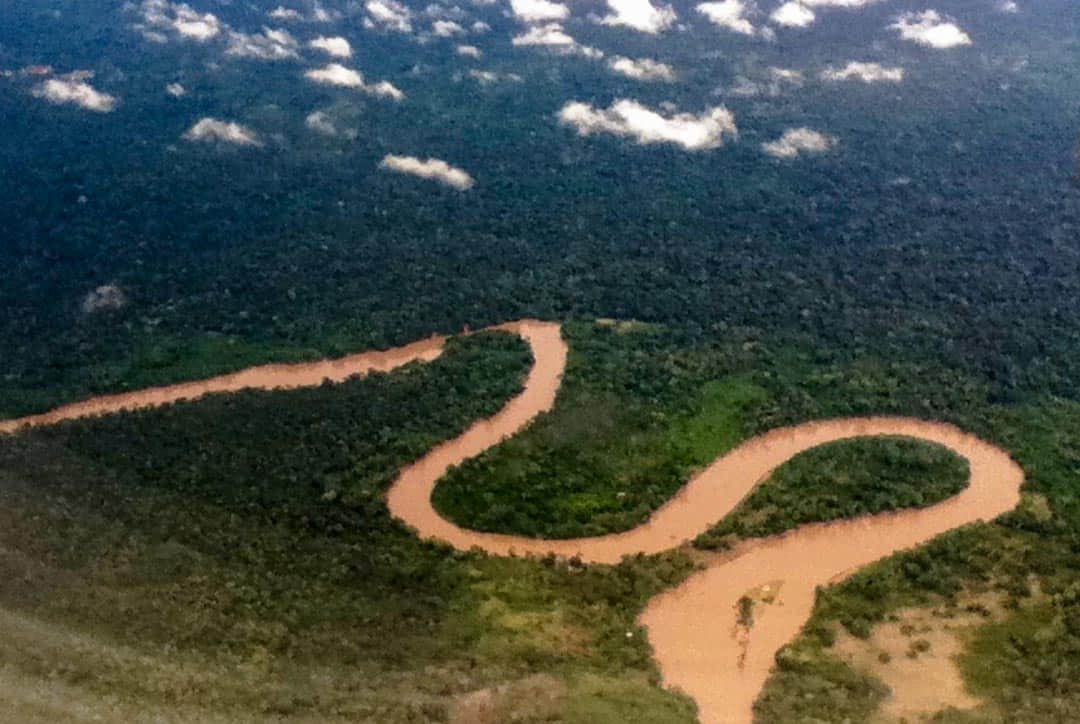
Back on the ground once more, we boarded speed boats for an exhilarating, wind-in-your-face commute up the Napo River. On both sides of the chocolatey-brown waterway, the lush, green Amazonian jungle lined the muddy banks, unbroken save for the occasional clearing with a tumbledown house on it.
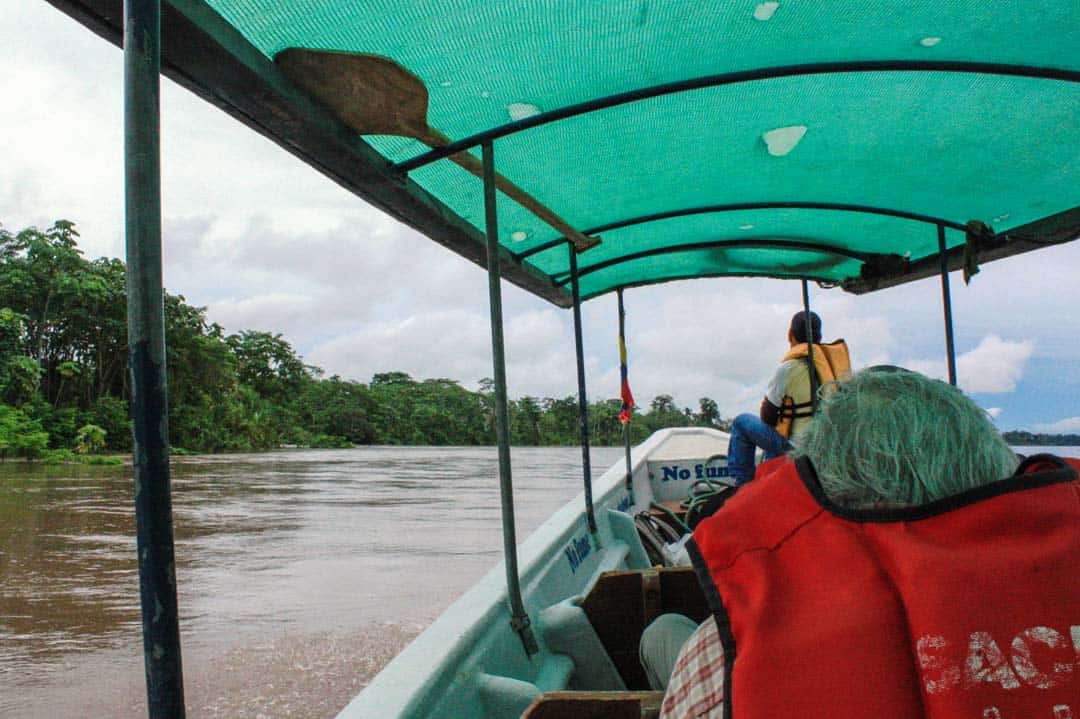
Pulling up at a riverbank two hours later, we disembarked to the greeting of a crew from Sacha Lodge and set out for a half-hour trek along raised boardwalks through a flooded forest. This was our first taste of the Amazon jungle and we were transfixed by the vivid greens, the raucous insects, and the damp, tropical smell of the dense vegetation.
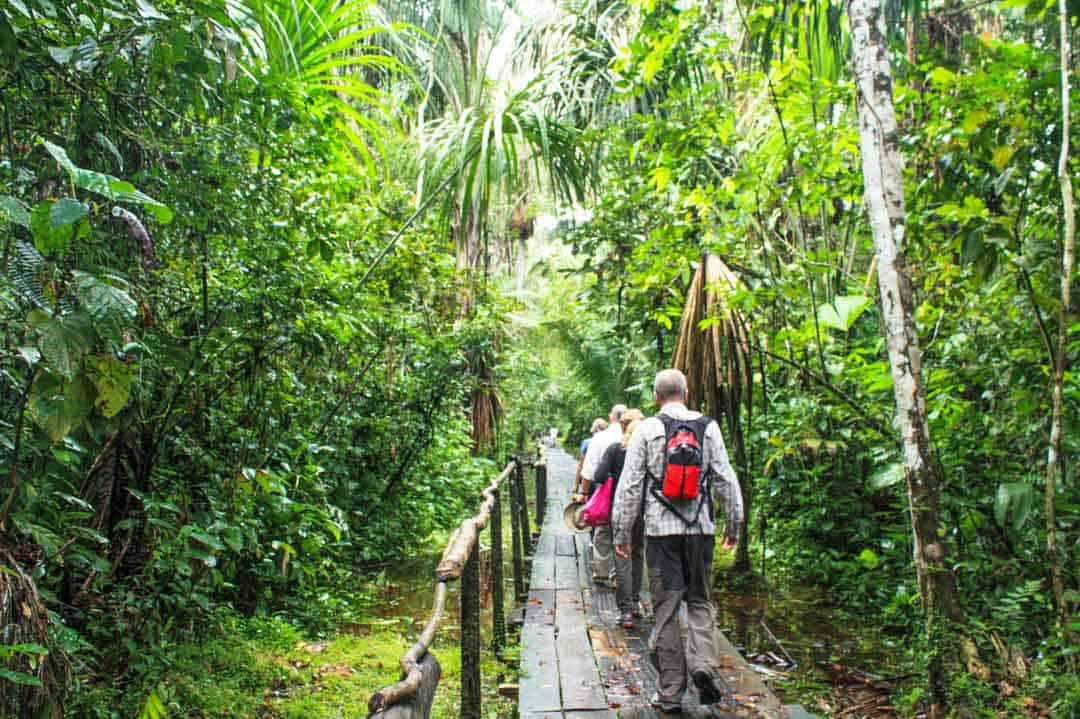
Our path soon arrived at a narrow canal winding its way through the trees. Here, we boarded small boats for the last leg of our journey: a paddle across the blackwater Pilchicocha lagoon.
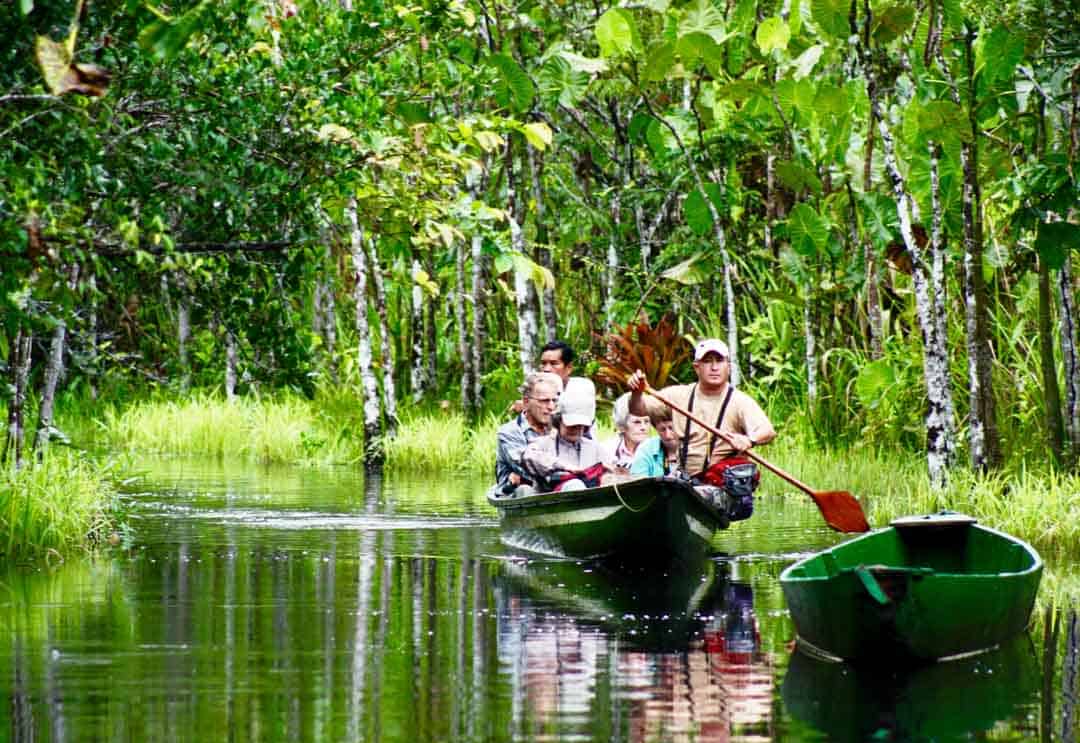
Eight hours after setting out from Quito, we were rewarded with our first view of picturesque Sacha Lodge, perched on the edge of a lagoon in a 5,000-acre ecological reserve deep within Ecuador’s Amazon jungle.
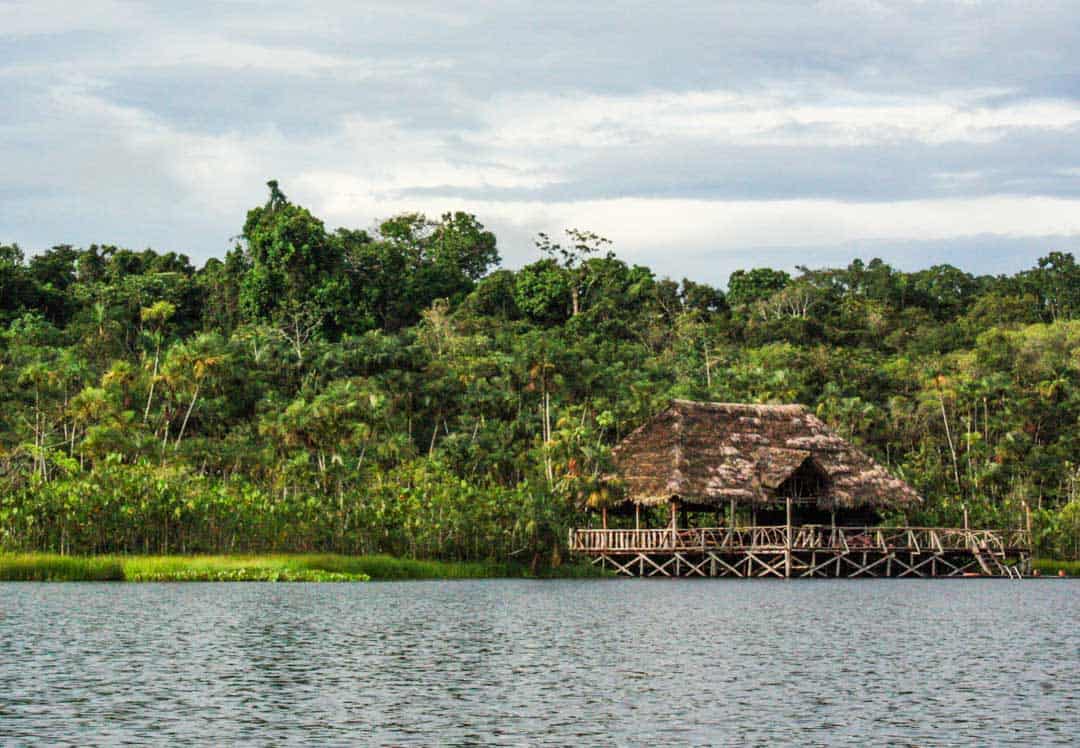
Lodge Life In The Amazon Jungle
The next couple of days served up an exciting itinerary of guided day and night walks in the jungle, dawn bird spotting above the trees on Sacha Lodge’s 36-metre-high canopy walk, tranquil canoe rides down narrow, dark water creeks off the Pilchicocha lagoon, and wildlife watching aplenty.
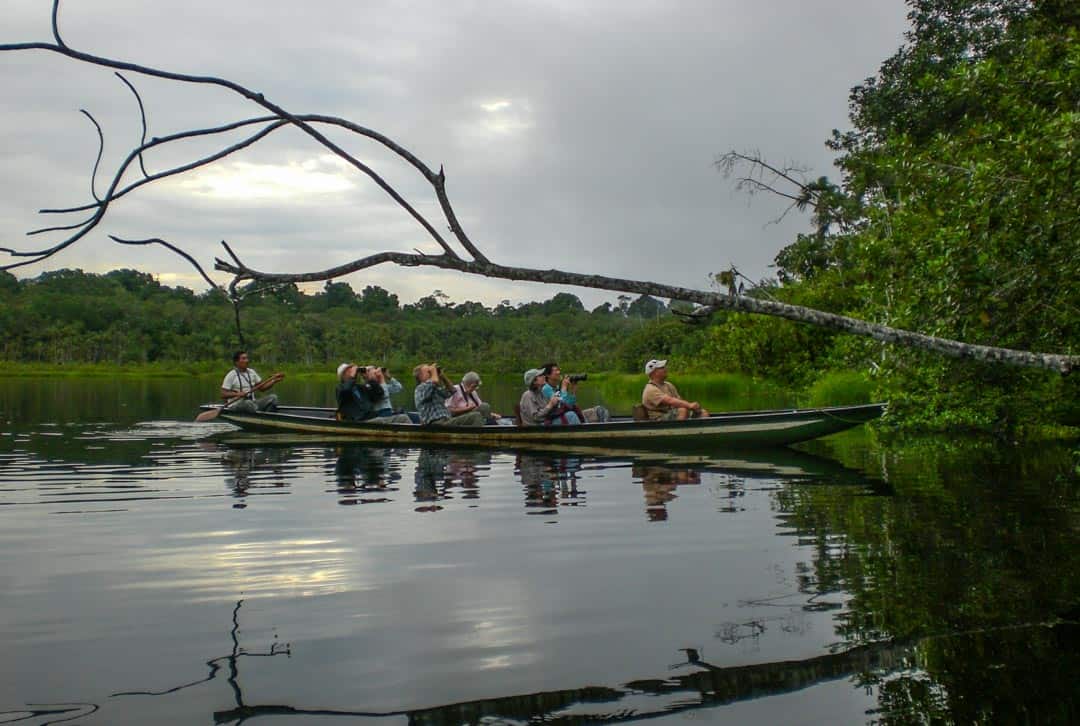
Our activities were orchestrated by our stand-out guiding team (small groups are allocated the same guides for the duration of their stay): an Ecuadorian naturalist guide and an Indigenous man from a nearby community who shared with us his extraordinary knowledge of the jungle; stories and learnings that have been passed down through generations of Amazonian people.
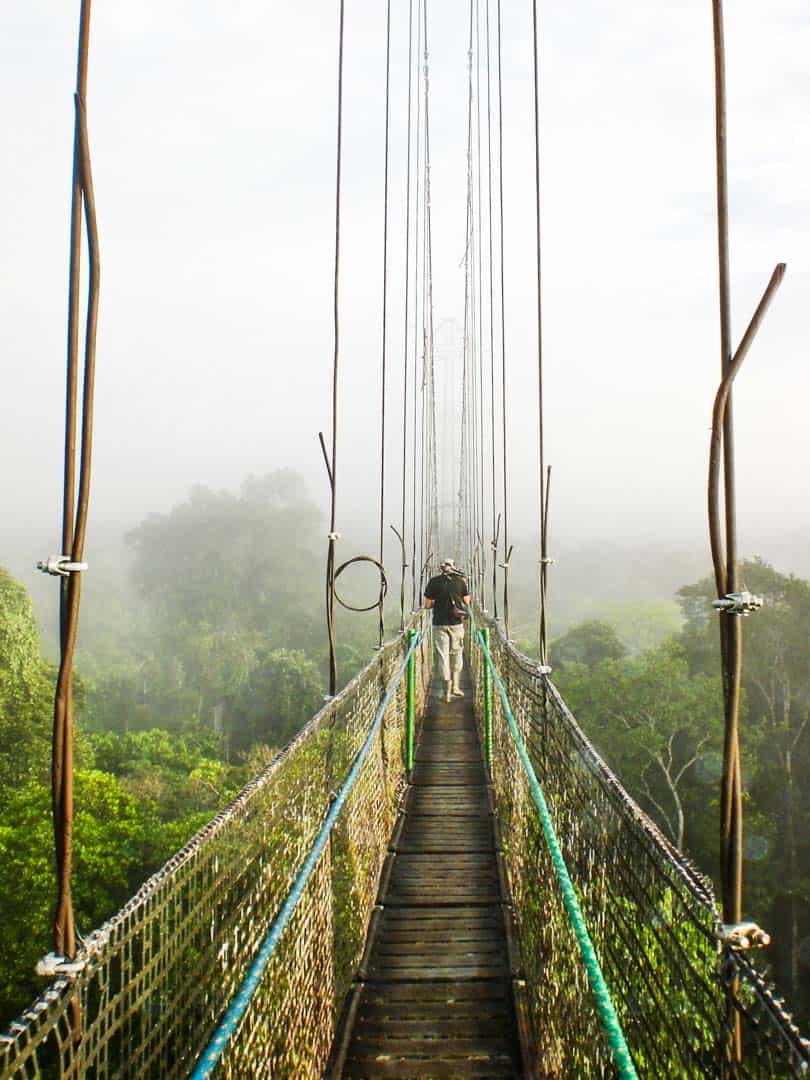
While we didn’t spy the elusive anaconda, the mysterious jaguar, or even a hairy tarantula, our daily walks, paddles and boat rides revealed parrots clamouring over salt licks, vibrantly-coloured aracari (a kind of toucan), noisy howler monkeys, flighty squirrel monkeys, a bashful pygmy marmoset, a host of weird and wonderful bats, a lazy sloth or three, and dozens of delightful bird species.
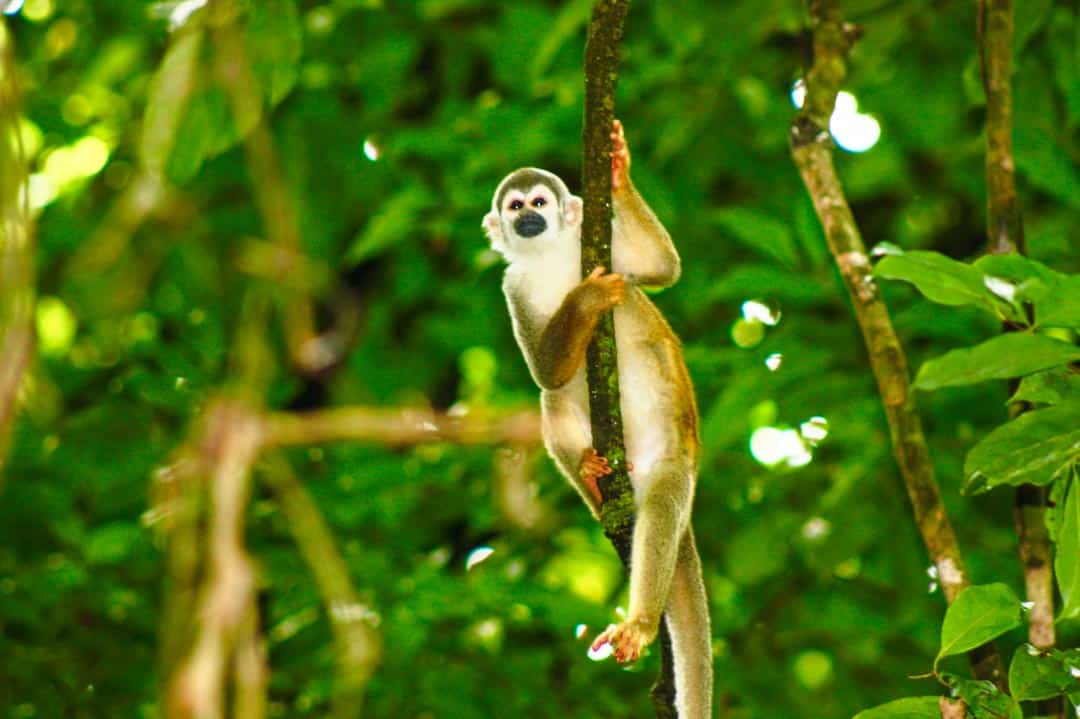
We also encountered a plethora of jungle insects, like arsenic-spraying millipedes, stink-bugs smelling of pine-o-clean, bullet ants big enough to carry off small children, and tiny frogs that can kill you if you’re unlucky enough to pick one up with an open wound.
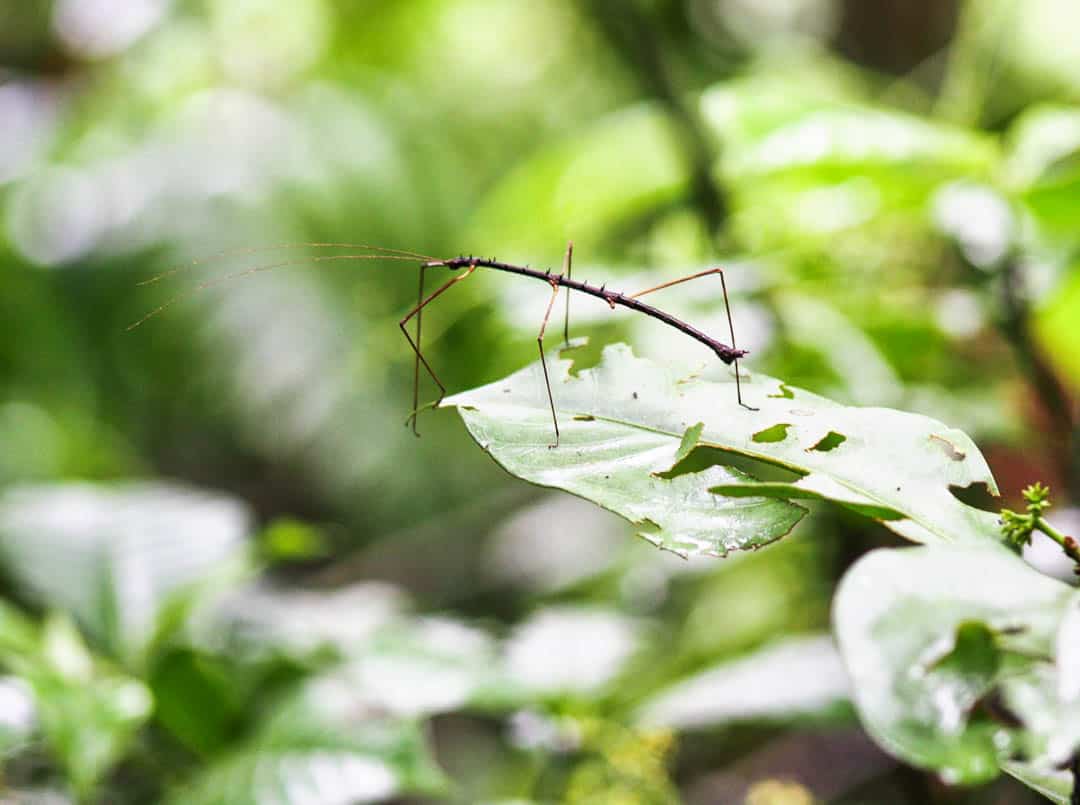
One morning, as we walked through the dense forest, a snapping sound suddenly cracked through the air. Our guide stopped us, scanned the surrounding trees, and calmly told us to stay exactly where we were. A slow whoosh started up, shortly followed by a thunderous crash that erupted leaves and branches into the canopy.
As we inspected the large tree that had fallen close by, hearts pounding, one of our group broke the nervous tension with the inevitable question, ‘But would it have made a sound if we weren’t on hand to hear it?’ The philosophical debate raged for the rest of the hike.
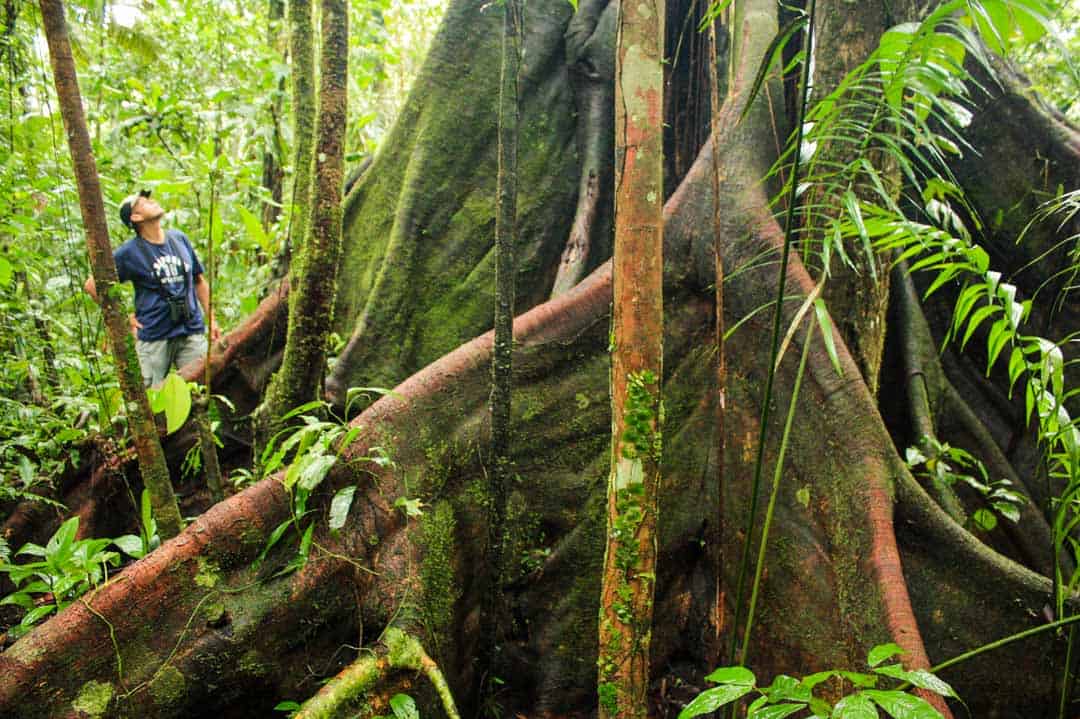
Between jungle jaunts and fishing for tiny, harmless piranha in the Pilchicocha lagoon, we whiled away the hours in a hammock on the balcony of our cabin spotting birds and monkeys, or meeting other travellers in Sacha’s communal thatched-roof bar and over tasty meals in the restaurant.
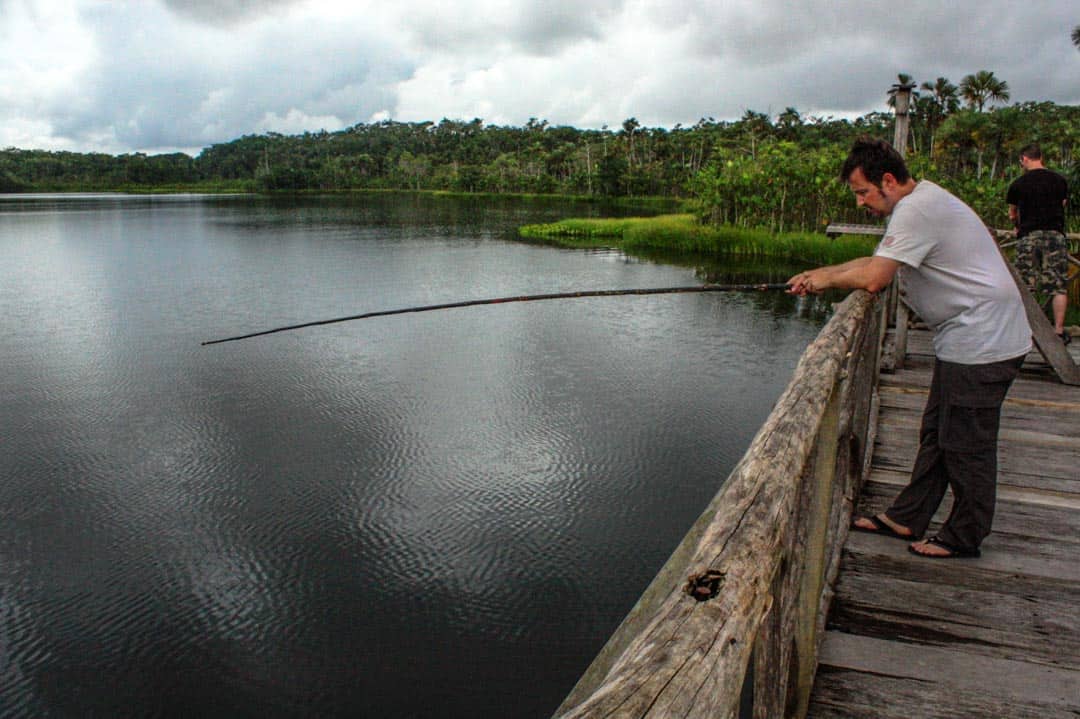
Why Stay At An Ecolodge In Ecuador’s Amazon Rainforest?
While it is possible to get to Ecuador’s Amazon gateway towns under your own steam, it’s recommended that you travel into the forest with a guide, join a river cruise or stay at a lodge. Guides, tours and lodges are many and prices vary. Naturally, so does quality and commitment to eco-friendly practices. We recommend researching your options before you go.
If you’re making the effort to get to the Amazon in the first place, then it’s worth spending some quality time there, and the best way to do that is to stay in a lodge. You’ll have daily activities that maximise your opportunities to immerse in the wonderful world of the jungle, and search out its shy inhabitants in the company of expert guides.
Given the vital importance of the Amazon and the challenges it faces today, choosing a lodge with solid environmental creds is one way of supporting the future of this unique and fragile ecosystem.
One of the reasons we chose Sacha Lodge was its focus on sustainability and environmental protection. For more than 20 years, the lodge has been working with the local communities to acquire rainforest for protection and to employ local people in the tourism sector, providing a secure alternative to environmentally damaging activities like logging. Sacha started with 500 hectares; today it protects 5,000 acres.
Sacha Lodge also brings local people on board as nature guides to share with visitors their unique knowledge of the Amazon rainforest, helping to preserve Indigenous traditions and ancestral knowledge. The day and night jungle walks with our guides were an absolute highlight of our stay. And let’s be honest, we wouldn’t have seen half of the wildlife we did without their eagle eyes.
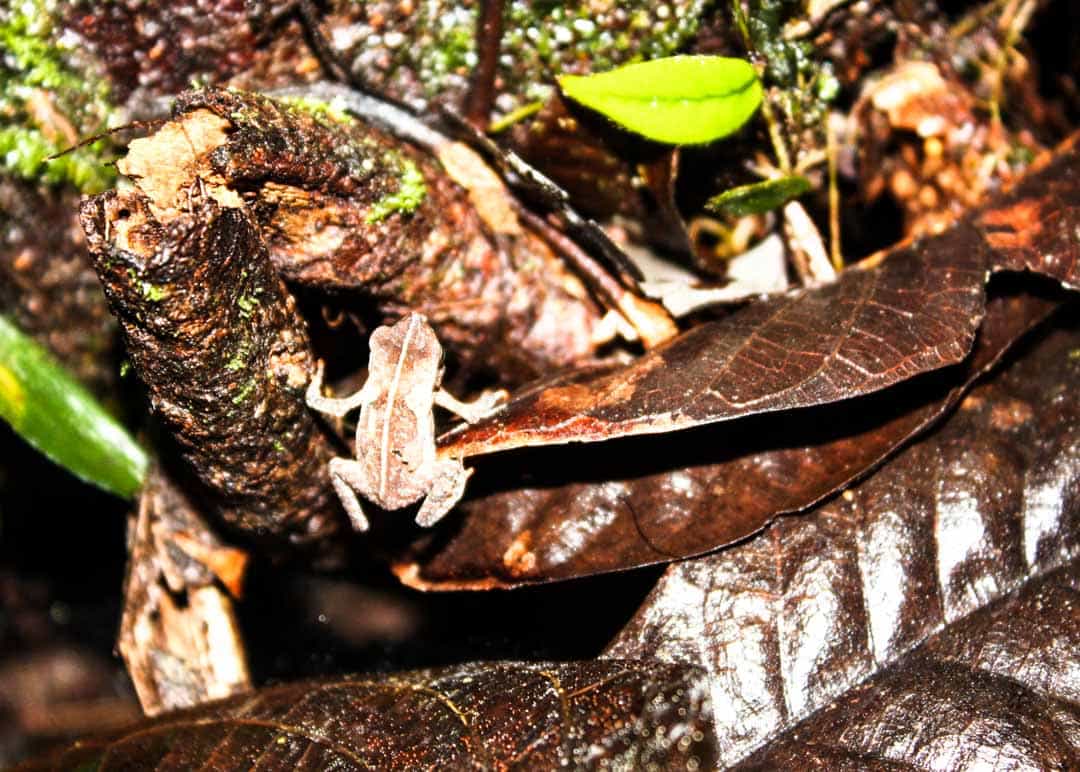
At the end of the day, our Ecuador Amazon rainforest trip was short, but it was unforgettable. Seeing this extraordinary jungle, experiencing for ourselves the incredible diversity of life, and hearing about the many medicinal and health benefits the forest continues to yield, left an indelible mark on us. From the mesmerising shades of green and the curious sounds at night to the charming lantern-lit boardwalks of the lodge and a philosophy lesson on falling trees in the forest, our time in the Amazon is an experience we won’t soon forget.
Good To Know
Getting there: Sacha Lodge is located in the Amazon rainforest of northeastern Ecuador. The gateway town for reaching the lodge is Coca, in the province of Orellana, a 25-minute flight from Quito. From Coca, the lodge is a 2-hour speedboat ride, a short walk and a small paddle boat away.
Booking a stay: You can book your stay at Sacha Lodge directly through their website or organise your visit through an agent. We booked our 4-day/3-night trip through the awesome team at Happy Gringo Travel in Quito; they helped with all of the arrangements, including the return flights from Quito to Coca.
How long should I stay? Sacha Lodge runs 4-Day/3-Night and 5-Day/4-Night programs. Given the epic journey just to get there, we say stay as long as your time and budget allows.
What to pack: It can get seriously hot and humid in the jungle so pack for sweaty weather. Light coloured long sleeves and long pants are good for the evenings though when mosquitos come out to play, and repellent with DEET is a very good idea.
The creatures of the Amazon are masters of disguise and very shy. Binoculars are a must, and if you’re a photography fan, a 200mm+ lens will bring you closer to the wildlife.
Sacha is literally in the jungle and the nighttime soundtrack is epic so if you’re a light sleeper, bring earplugs!
Check out our Amazon jungle gallery for a glimpse of the wildlife that awaits in this verdant part of the world.
Editor’s Note: This post was originally published in 2011 and has been revamped and updated for accuracy and currency with new information and links.
